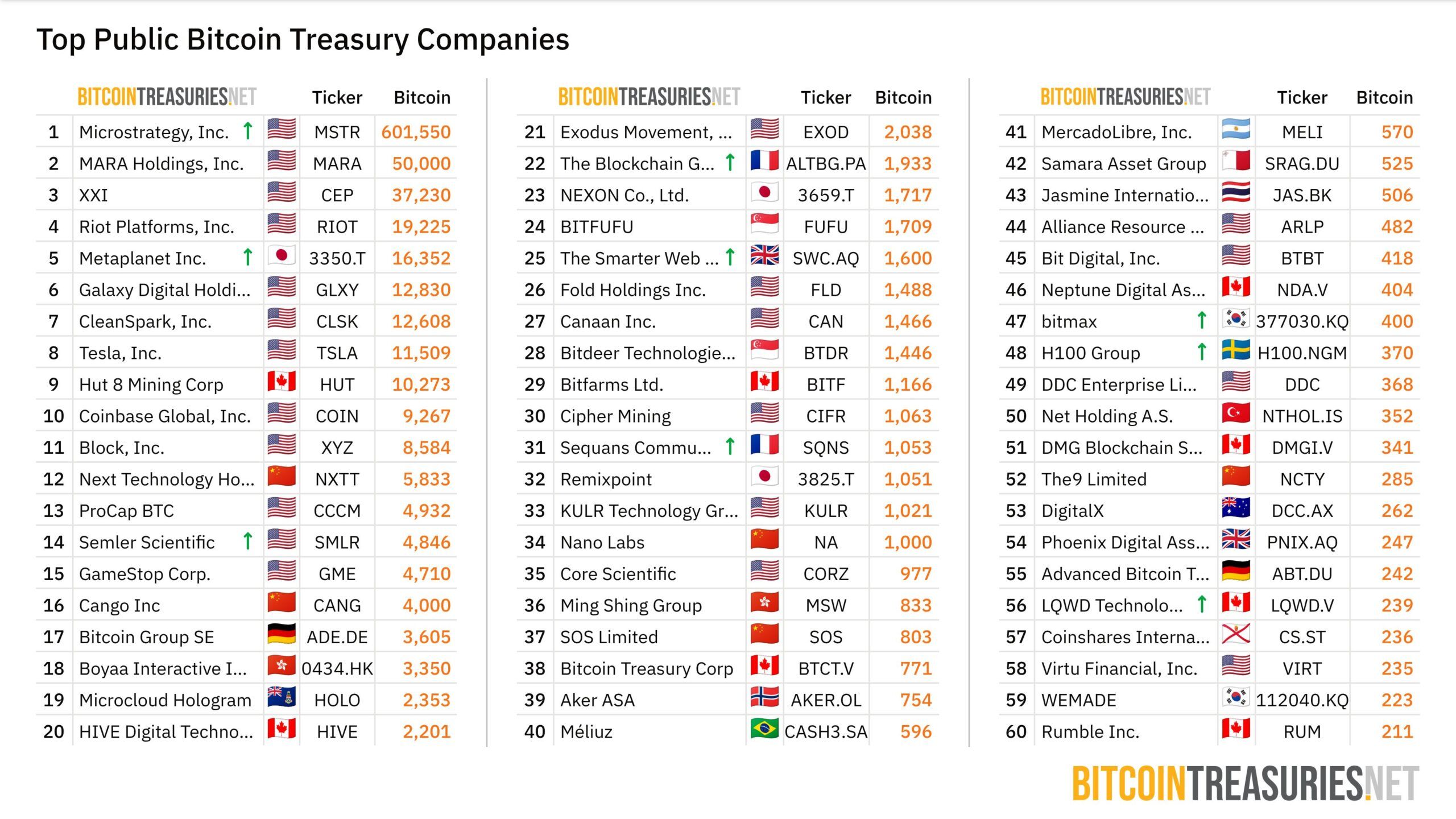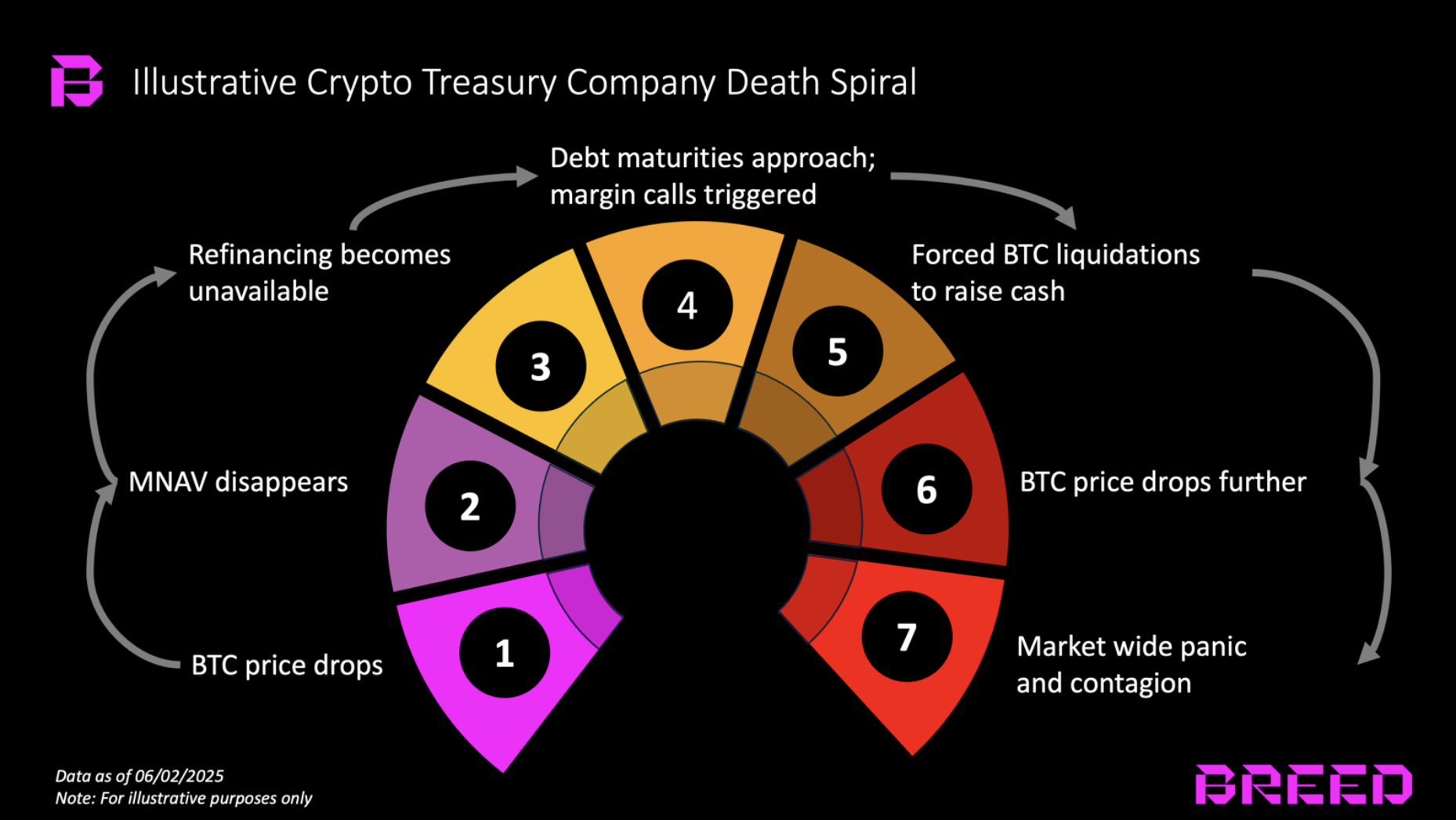-
Corporate Bitcoin adoption is accelerating in 2025, with over 60 companies embracing aggressive accumulation strategies to bolster their treasuries.
-
While Bitcoin treasury companies like Strategy leverage their holdings to raise capital, smaller firms face heightened risks during market downturns due to limited scale and debt pressures.
-
According to Bitcoin Treasuries, the rise in corporate Bitcoin holdings signals both opportunity and significant challenges for the broader crypto ecosystem.
Explore how corporate Bitcoin adoption is reshaping treasury strategies in 2025, highlighting risks for smaller firms and the dynamics behind Bitcoin treasury companies.
Expanding Corporate Bitcoin Holdings: Trends and Implications
Institutional interest in Bitcoin has surged, with public companies now controlling over 4% of the total Bitcoin supply, doubling their holdings since 2024. This trend reflects a diversification in corporate treasury strategies, ranging from cautious exposure to full-scale Bitcoin treasury models.
Companies like Strategy have pioneered the aggressive accumulation approach, holding more than 580,000 BTC, which accounts for a majority of corporate Bitcoin reserves. Conversely, firms such as GameStop and PublicSquare adopt more conservative strategies, integrating Bitcoin as a supplementary asset rather than their core focus.

Top Public Bitcoin Treasury Companies. Source: Bitcoin Treasuries.
This diversification in approach underscores the varying risk appetites and strategic objectives within the corporate sector, emphasizing the need for tailored risk management frameworks.
Strategic Capital Raising Through Bitcoin Holdings
Bitcoin treasury companies must do more than accumulate BTC; they need to create shareholder value that exceeds the intrinsic Bitcoin holdings. This is achieved through the Multiple on Net Asset Value (MNAV) premium, where investors pay a premium for shares based on anticipated growth in Bitcoin per share.
Strategy exemplifies this by issuing convertible debt and At-The-Market (ATM) equity offerings, enabling efficient capital raises to acquire additional Bitcoin. This cycle reinforces investor confidence and sustains elevated stock valuations beyond the underlying Bitcoin assets.
Risks of Aggressive Bitcoin Accumulation for Smaller Firms
Smaller companies attempting to replicate Strategy’s model face significant challenges. Without the scale, creditworthiness, or market reputation, these firms encounter higher borrowing costs and stricter debt covenants, increasing financial vulnerability.
During bear markets, declining Bitcoin prices can trigger margin calls on collateralized debt, forcing distressed sales that exacerbate downward price pressure. Companies lacking diversified revenue streams become wholly dependent on capital raises and Bitcoin appreciation, heightening the risk of insolvency.
Market-Wide Implications of Distressed Selling
A wave of forced Bitcoin sales by multiple companies could precipitate a “death spiral,” where falling prices trigger further liquidations in a self-reinforcing negative feedback loop. This phenomenon, observed during the 2022 crypto winter, threatens to destabilize the broader cryptocurrency market.

The different stages of a Bitcoin death spiral. Source: Breed VC.
Such market dynamics could erode investor confidence, provoke regulatory scrutiny, and induce a flight to safety across digital assets, impacting liquidity and valuations beyond Bitcoin.
Balancing Exposure and Risk: Strategic Considerations for Public Companies
While Bitcoin remains an attractive asset for treasury diversification and inflation hedging, companies must carefully evaluate their exposure levels. The decision to pursue full Bitcoin treasury status versus modest exposure carries distinct financial and operational implications.
Strategy’s pioneering role is supported by unique resources and market influence, which smaller firms may lack. As corporate Bitcoin adoption grows, prudent risk assessment and capital management will be critical to sustaining long-term viability and market stability.
Conclusion
Corporate Bitcoin adoption in 2025 is reshaping treasury management strategies, offering potential rewards alongside significant risks. While large players like Strategy demonstrate how aggressive accumulation can create value, smaller firms must navigate heightened financial pressures and market volatility.
Investors and companies alike should remain vigilant, balancing ambition with caution to mitigate systemic risks and ensure sustainable growth within the evolving crypto landscape.
